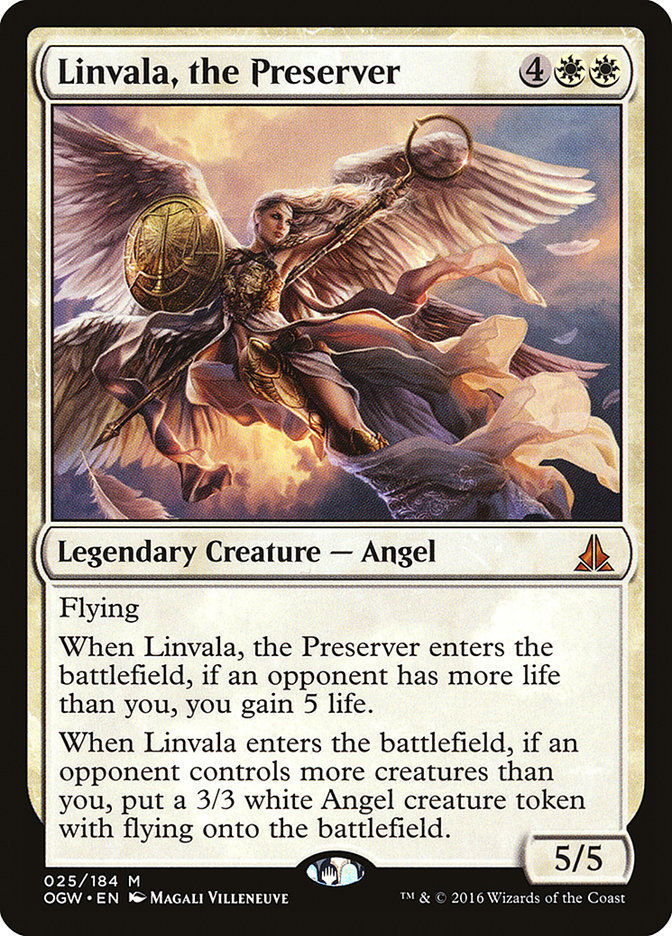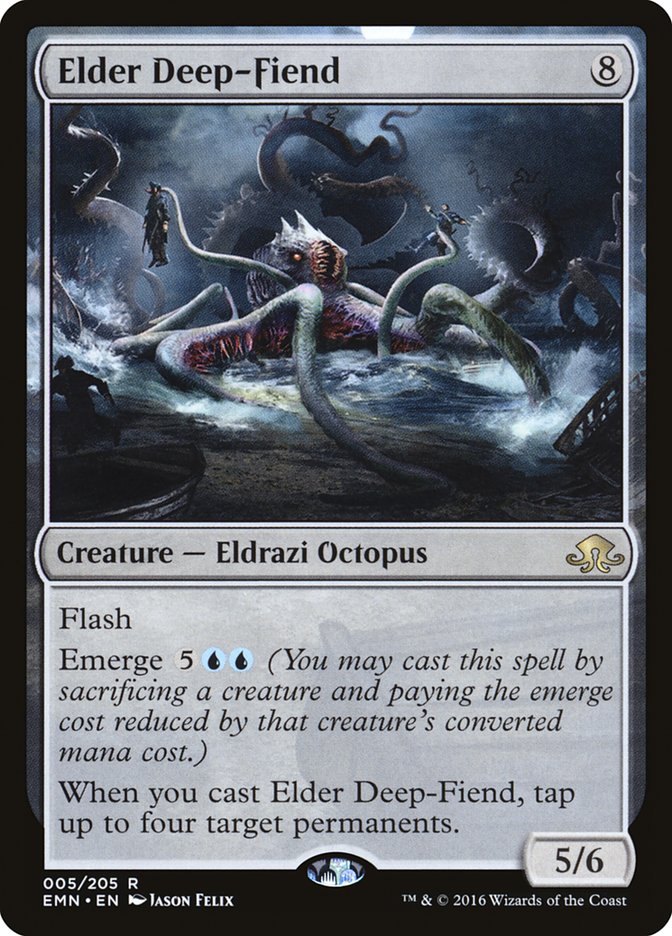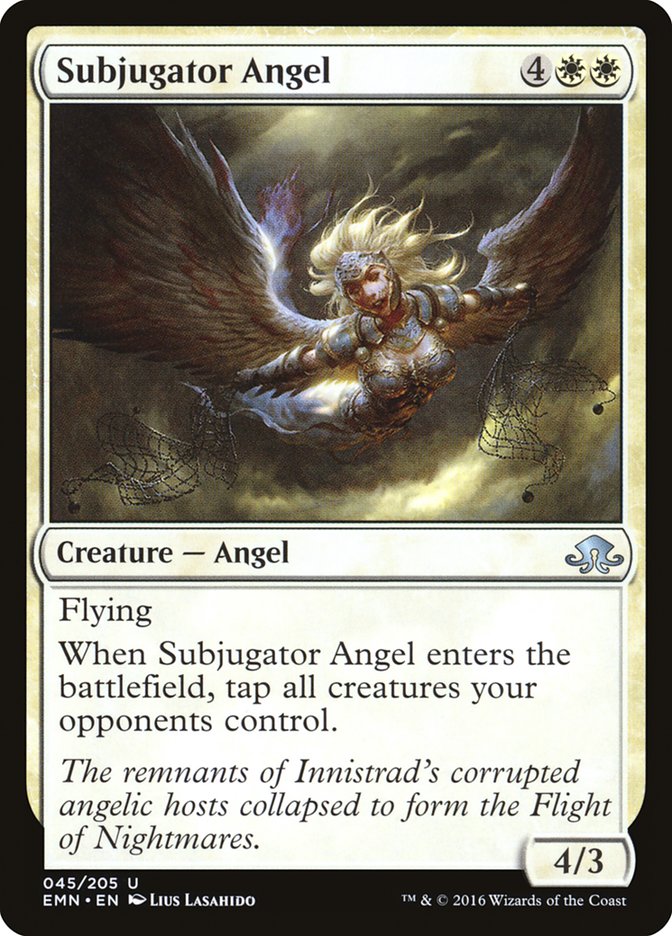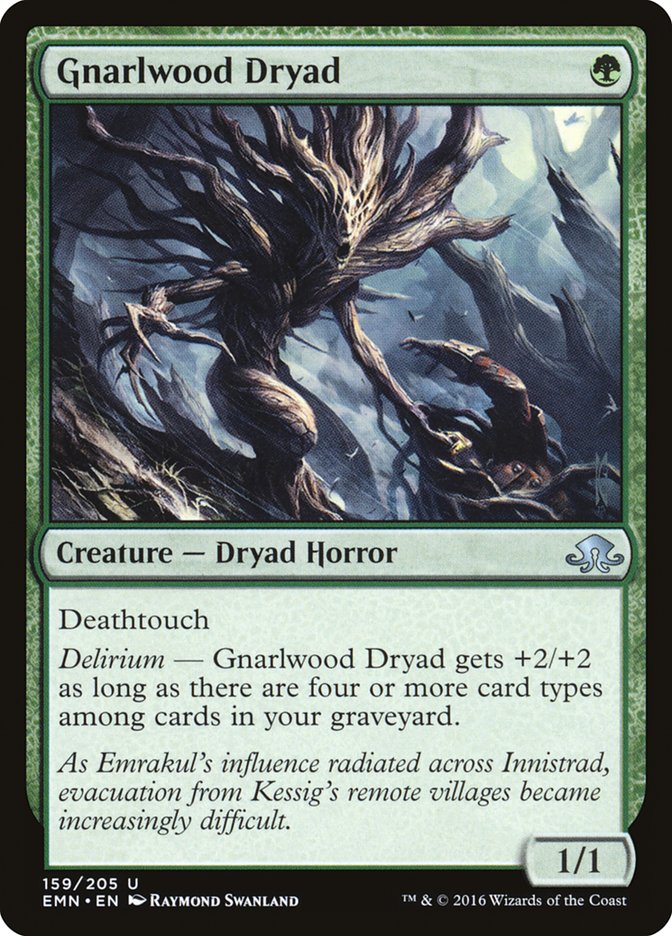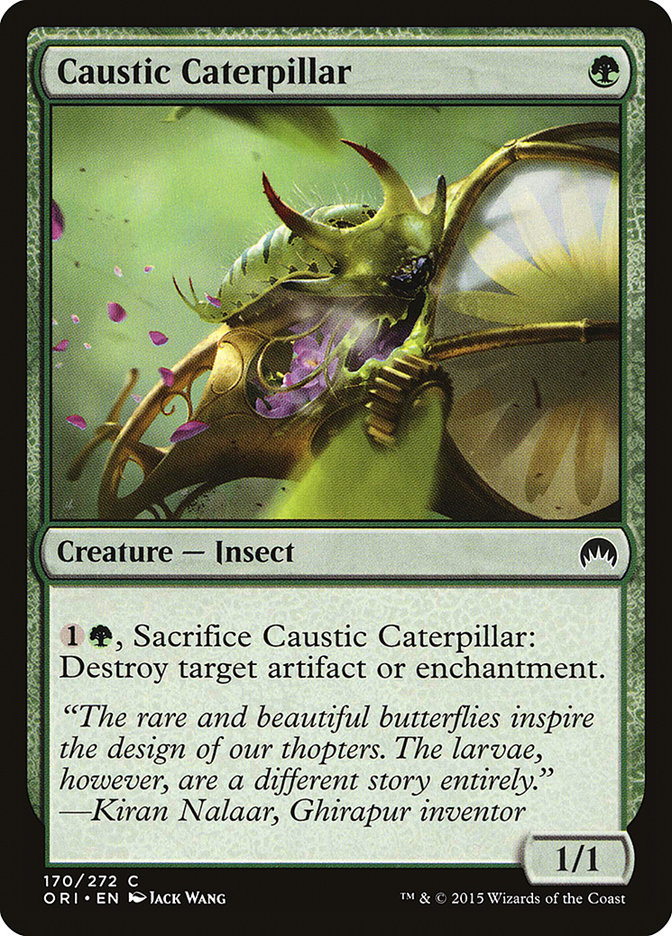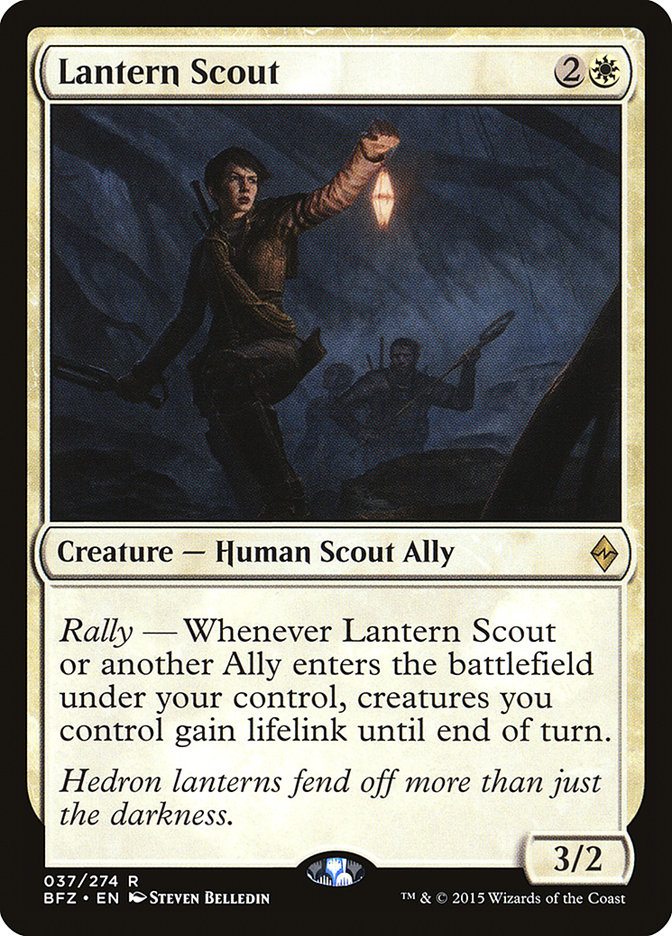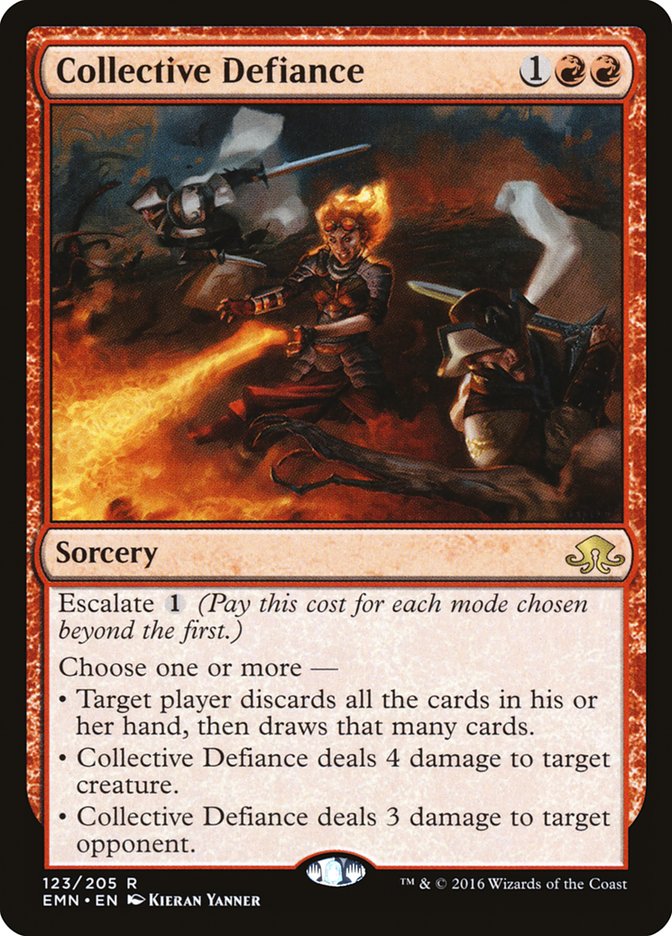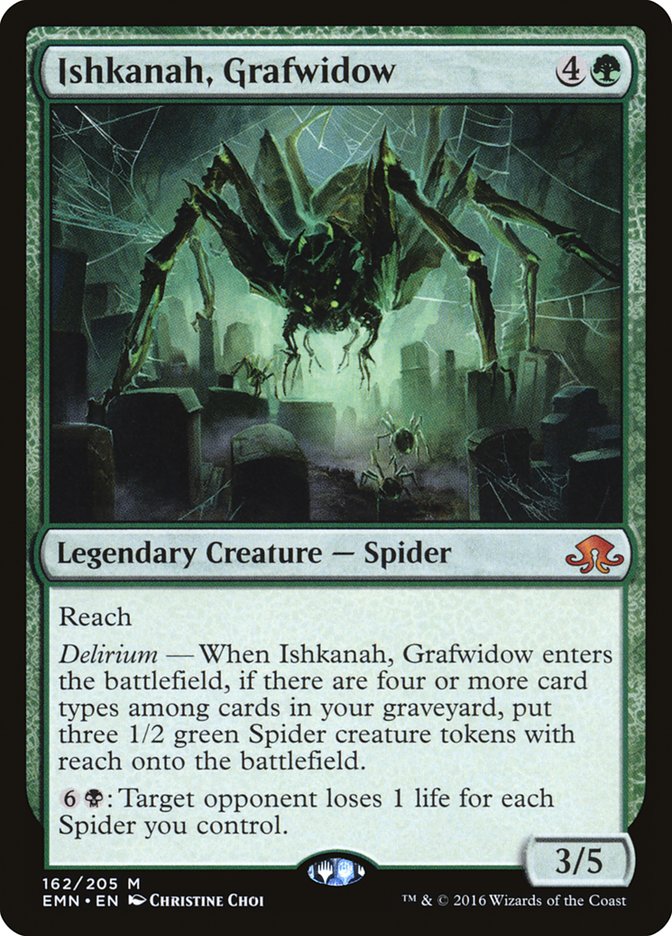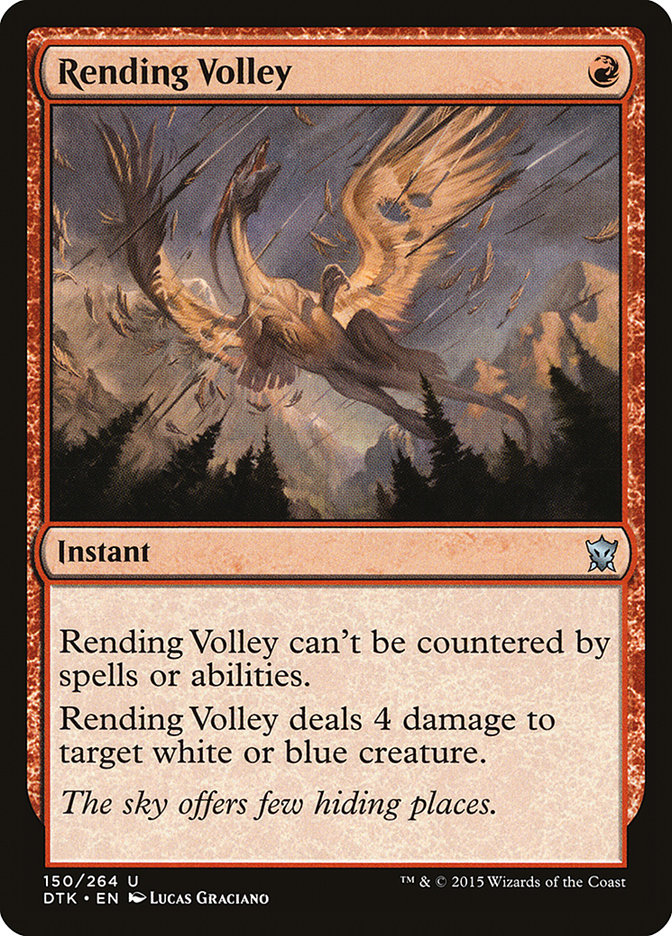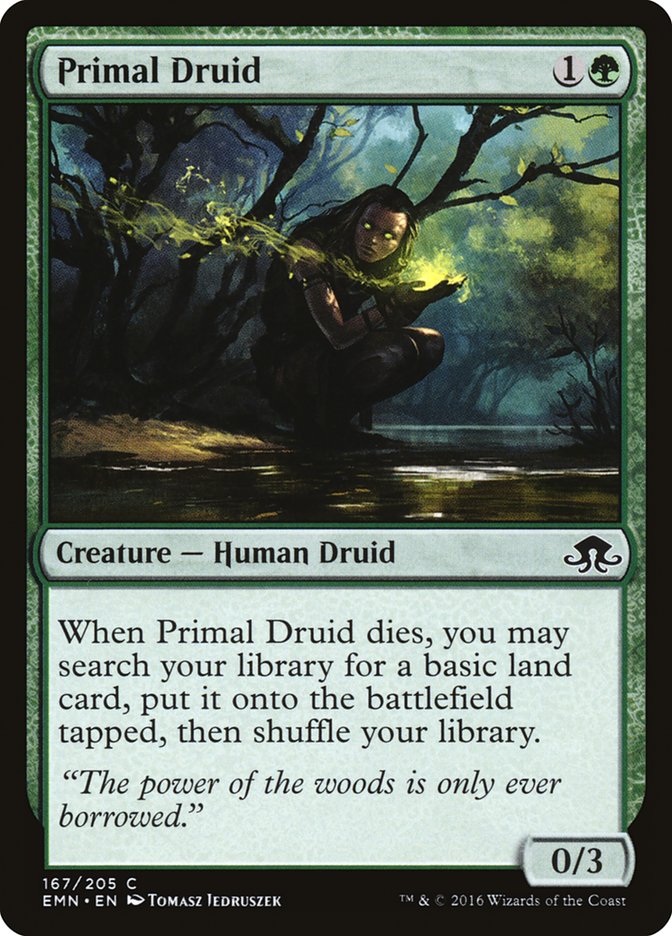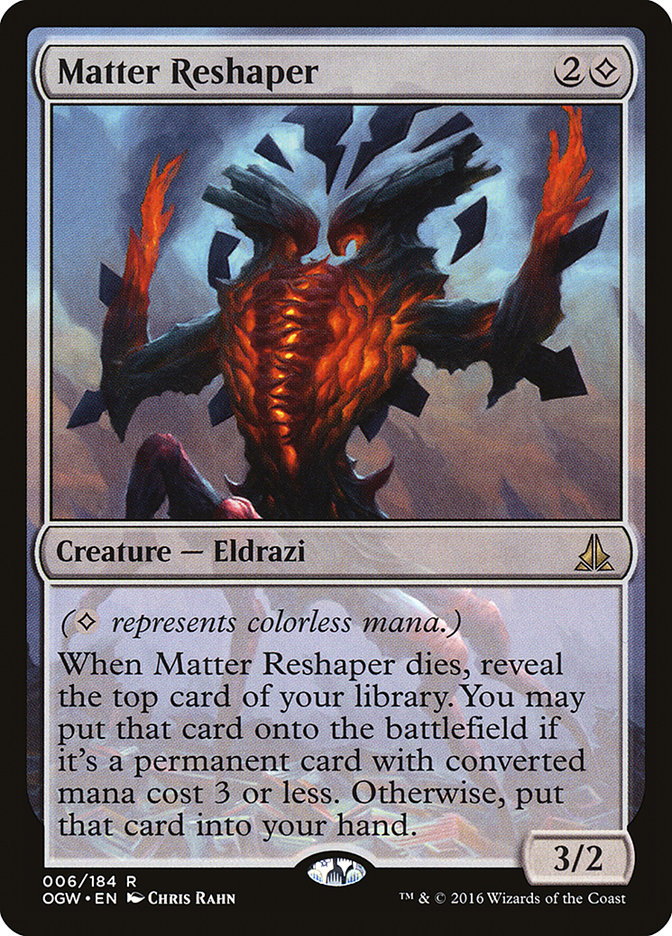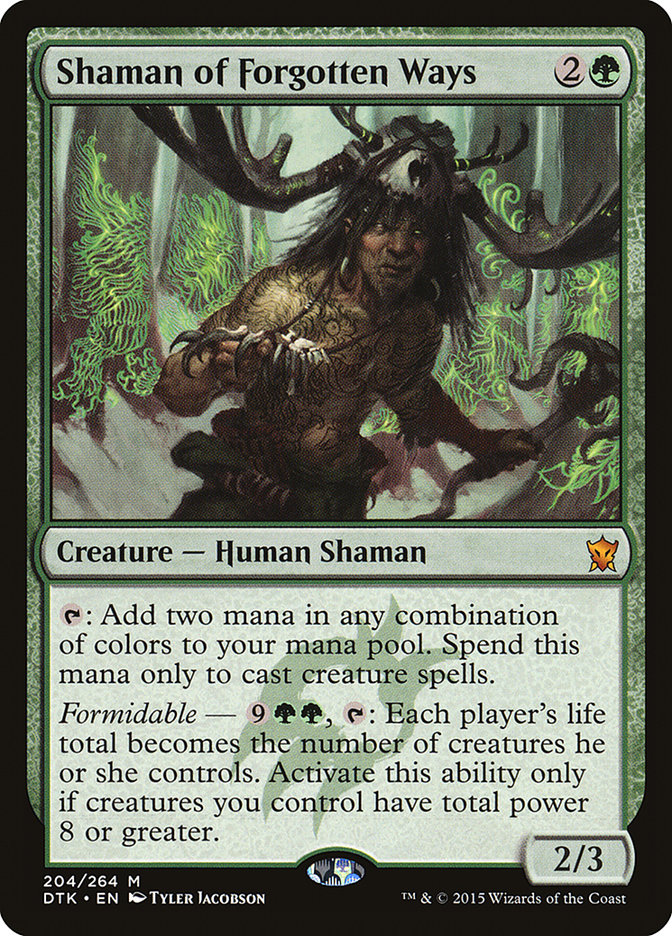Pro Tour Eldritch Moon coincided with the 23rd anniversary of Magic: The Gathering. The location was a beautiful one in Sydney, Australia, where over 300 players converged on the Sydney Olympic Park to try to innovate on a stale Standard format. Fortunately, many were successful.
Much like Pro Tour Shadows over Innistrad, Bant Company was the deck to beat going into #PTEMN due to the results of the SCG Tour® events before it. For #PTSOI, Jim Davis’s win at #SCGBALT during Season One of the SCG Tour® with his take on Bant Company set the format. Things shifted a touch during the Columbus Invitational when Max McVety won with Mono-White Humans, but with Craig Krempels’s runner up finish with Bant Company along with the 7-1 or Better Standard Decklists being littered with the powerful three-color deck, it was very clear what the deck to beat was going into #PTSOI.
So what happened? Eight different decks made the Top 8 of #PTSOI, headlined by Steve Rubin hoisting the trophy with G/W Tokens. Bant Company was very well-represented, but the professional community found unique ways to attack the deck and quell its dominance.
Oddly enough, the trajectory to #PTEMN looked very much the same. Devin Koepke’s win at Columbus with Team Cardhoarder’s take on Bant Company once again set the format. The additions of Spell Queller, Selfless Spirit, and Thalia, Heretic Cathar looked to be too difficult to overcome, and many simply submitted a similar decklist at #SCGBALT, myself included. Yes, Osyp Lebedowicz did win #SCGBALT with G/W Tokens, but much like the lead-in to #PTSOI, it was Zachary Plott’s runner-up finish with Bant Company along with 42% of the Day 2 Metagame being Bant Company that made it the deck to beat going into #PTEMN.
So what happened? Six different decks made the Top 8 of #PTEMN, headlined by Lukas Blohon hoisting the trophy with B/W Control. Bant Company was, once again, very well-represented, but once again, the professional community found ways to attack the deck and quell its dominance.
Today, I’m going to go over the Top 8 decks of #PTEMN, what I like and dislike about each of them, and how I believe they will affect the Standard Classic at #SCGNY and Grand Prix Portland this coming weekend.
Creatures (7)
Planeswalkers (6)
Lands (26)
Spells (21)

There’s no better place to start than the winning decklist, and seeing this result from Lukas Blohon brought a smile to my face, since I played a lot of B/W Control before Eldritch Moon was released to some fairly healthy results. When I was playing B/W Control, I had a fairly creatureless configuration – only one copy of Linvala, the Preserver maindeck – to blank all of the removal that was going around. This was a fairly successful strategy before Eldritch Moon showed up, but with the arrival of Elder-Deep Fiend, Spell Queller, and a bevy of other incredibly powerful cards, B/W Control needed to evolve.
And Blohon found the perfect evolution.
The first step was actually putting some creatures in the maindeck. There’s always a risk involved with playing maindeck creatures that don’t provide a lot of value because of Reflector Mage and Dromoka’s Command, but if you’re going to start some creatures maindeck, you might as well start some incredibly powerful ones.
Kalitas, Traitor of Ghet has long been a sideboard staple of B/W Control simply due to how powerful it is if you get to untap with it. Again, Reflector Mage, Dromoka’s Command, and any other available answer is an issue, but if Kalitas doesn’t die, the opponent almost certainly does. And you can say the exact same thing about Archangel Avacyn and Linvala, the Preserver.
The addition of Liliana, the Last Hope might look a little strange because this isn’t a deck dedicated to delirium or other ways to abuse the graveyard, but that doesn’t mean it’s a poor card. It’s merely an average one with the potential for a high upside when returning Kalitas or Avacyn. Let’s not forget that it does a great job of keeping Humans and Spirits in check, combos with Languish to finish off a five-toughness creature, and has a game-winning ultimate if things ever get to that point.
B/W Control isn’t fancy. It kills creatures, plays planeswalkers, and hopes its powerful creatures aren’t answered. Which, oddly enough, is just the way I want to be playing Magic right now. So, Lukas Blohon, thanks for giving me a Standard deck to play!
Creatures (16)
- 3 Pilgrim's Eye
- 3 Emrakul, the Promised End
- 1 Wretched Gryff
- 4 Gnarlwood Dryad
- 3 Elder Deep-Fiend
- 2 Ishkanah, Grafwidow
Planeswalkers (1)
Lands (21)
Spells (22)

Coming into the weekend, Owen Turtenwald was only a newly minted Magic Hall of Famer. Leaving the weekend? Still a Magic Hall of Famer, but also the runner-up of #PTEMN and 2016 Player of the Year. It was an incredible run for Magic’s best player, a title I feel he’s held for at least the past two years and I don’t think it’s been particularly close, but how he was able to accomplish being runner-up at #PTEMN is the real story for me.
Temur Emerge was a deck that I knew many had been secretly testing leading into #PTEMN, but it was unclear if anyone would find the perfect build of the deck. It’s a fairly strange deck to try to build initially, as things don’t come off as cookie-cutter as “cut X, add Spell Queller, shuffle up and deal.” Temur Emerge has a lot of moving parts with cards like Vessel of Nascency, Grapple with the Past, and Gather the Pack to get the engine running; Nissa’s Pilgrimage and Pilgrim’s Eye to make casting the payoff cards a reality; and then, of course, the payoff cards:
Elder Deep-Fiend is a card everyone knew was busted upon its release. The tricky part was finding the right home for it, but it looks like Turtenwald did a nice job of it. It isn’t the focal point of his take on Temur Emerge, which is made evident by only playing three copies, but it is integral in buying time until it’s time to take your opponents turn.
It’s weird to say that Emrakul was the breakout card of the Pro Tour, given how much anticipation there was around its release, but after watching the elimination rounds on Sunday, it seemed like every match that she was involved in centered around her. Owen’s deck might be the best Emrakul deck in the tournament, which is a very powerful thing to say given how many excellent teams tried to break the card. Three copies in the maindeck showed exactly what Turtenwald was trying to accomplish during his stay in Sydney, and while drawing multiples might be awkward at times, the juice is worth the proverbial squeeze when it comes to resolving Emrakul.
Wrapping my head around this deck is pretty hard to do without playing any games with it, but if it’s good enough for the 2016 Player of the Year, it’s certainly good enough for me!
Creatures (15)
- 1 Den Protector
- 2 Nissa, Vastwood Seer
- 2 Sylvan Advocate
- 3 Tireless Tracker
- 1 Emrakul, the Promised End
- 2 Ishkanah, Grafwidow
- 4 Grim Flayer
Planeswalkers (4)
Lands (24)
Spells (17)

Unlike the B/W Control deck that Lukas Blohon won the Pro Tour with, Samuel Pardee found himself a deck geared towards abusing Liliana, the Last Hope. B/G Delirum, unsurprisingly, is a deck that takes full advantage of every single piece of the Liliana pie. The +1 ability still does a great job of taking care of Humans and Spirits, just like it does in B/W Control, but the -2 ability does so much more for Pardee than it does for Blohon. The ability to consistently turn on Grim Flayer and Ishkanah, Grafwidow certainly is nice, but it’s the addition of rebuying those threats and others like Tireless Tracker and Nissa, Vastwood Seer than I’m truly interested in.
The removal suite is what I would expect from a deck like Pardee’s. Grasp of Darkness, Ultimate Price, Ruinous Path, and Languish are all effective tools against Bant Company, but what this deck gets that B/W Control doesn’t have access to is Traverse the Ulvenwald. Because having delirium is virtually a guarantee, Pardee gets to mix up not only the creatures he plays in his maindeck but also some sideboarded silver bullets like Gilt-Leaf Winnower and Conclave Naturalists.
Pardee’s B/G Delirum deck reminds me a lot of the B/G Seasons Past deck that Jon Finkel played to the Top 8 of #PTSOI. The difference, however, is that Jon didn’t have access to Liliana, the Last Hope, whereas Sam did. As a result, Sam was able to move the Seasons Past package to the sideboard and play a much more aggressive maindeck. It’s not clear how much Pardee used the Seasons Past package during #PTEMN, and I’m not even sure that it’s still good in a general sense, but having that type of flexibility at your disposal at a Pro Tour is invaluable.
Overall, Sam’s B/G Delirum deck isn’t a deck that I would play. The reason is simple – it’s very similar to B/W Control and I favor the white cards Blohon has access to over the green ones Pardee receives. That doesn’t mean I think what Pardee is doing is bad. It just means it’s not for me.
Creatures (26)
- 1 Jace, Vryn's Prodigy
- 4 Reflector Mage
- 4 Sylvan Advocate
- 2 Archangel Avacyn
- 3 Tireless Tracker
- 4 Duskwatch Recruiter
- 4 Spell Queller
- 4 Selfless Spirit
Lands (26)
Spells (8)

This is your quarterly reminder that Luis Scott-Vargas is better than you, me, and just about everyone else at Magic: The Gathering. Just in case we thought for a moment that he wasn’t one of the best to ever touch a Magic card, he goes and makes the Top 8 of another Pro Tour. All it took was a little Luck, Skill, and Victory.
And the incredibly annoying Bant Company.
Honestly, there’s not a lot for me to say here. We all knew how good Bant Company was coming into the Pro Tour. LSV took Team Cardhoarder’s build of the deck, changed a few things around, and destroyed the competition as only he can. After playing Bant Company to a poor finish at #SCGBALT two weeks ago, my biggest complaint outside of Spell Queller being decidedly mediocre was the inconsistent manabase. I had color issues for most of the tournament, but that wasn’t because the mana couldn’t work. That problem lies in my poor deckbuilding as my manabase was terribly misbuilt. Luis solved that problem by adding a 26th land and cutting Canopy Vista for Fortified Village.
LSV’s sideboard is filled with the usual stuff you’ll find in Bant Company – Nissa, Vastwood Seer; Negate; and Ojutai’s Command – but also has some unique ones in Subjugator Angel and Gnarlwood Dryad.
Subjugator Angel is simply a way to break the horrible battlefield stalls that take place a lot in Bant Company mirrors. Because the games drag on so much, it’s incredibly likely that Luis will find the one Subjugator Angel in mirror matches that drag out thanks to Tireless Tracker and Duskwatch Recruiter.
In regards to Gnarlwood Dryad, my best guess is that this was a way to slow aggressive decks down when on the draw. Bant Company isn’t a deck that really accomplishes delirium, so I expect that this was a way to buy some time against Humans and other aggressive strategies.
I played Bant Company at #SCGBALT. I hated it. I’ll never play it again. But if this is your style, LSV’s list is likely to be the best one.
Creatures (26)
- 4 Jace, Vryn's Prodigy
- 2 Nissa, Vastwood Seer
- 4 Reflector Mage
- 4 Sylvan Advocate
- 4 Tireless Tracker
- 4 Duskwatch Recruiter
- 4 Spell Queller
Lands (25)
Spells (9)

Going over one Bant Company deck was painful enough, so I’ll try to keep this take by Yuta Takahashi short and sweet. Yuta, trust me when I say it’s nothing personal. I hate Bant Company, not you.
Four copies of Jace, Vryn’s Prodigy is a bit different from what we’ve seen over the first few weeks of Standard. Realistically, I’m not a very big fan of Jace in Bant Company, as it doesn’t have a lot to recast when it transforms, but it does smooth out some fairly awkward draws, something that Bant Company is full of. It’s weird to think that Jace, Vryn’s Prodigy just isn’t that good, but given how dominant it was while the fetchland – Battle land manabase was in Standard, I’m just not very much into the card anymore.
The sideboard from Tahakashi, much like LSV’s, is filled with stuff we’re used to – Lambholt Pacifist, Negate, and Hallowed Moonlight – and stuff we’re not in Caustic Caterpillar and Lantern Scout.
Here’s my expert analysis on Caustic Caterpillar. Yuta wanted a way to kill an artifact or enchantment. Preferably with something that could be hit with Collected Company, since it’s the best card in his deck.
Ready for more expert analysis? Let’s talk about Lantern Scout and how it gains life against aggressive decks. Sylvan Advocate is an Ally, so Takahashi has a few additional ways to trigger it. Neat.
Can you tell how much I hate Bant Company? Good. Because I’m not even trying to hide it. Moving on…
Creatures (11)
Planeswalkers (2)
Lands (24)
Spells (23)

I. Love. This. Deck.
Ramp strategies are something that I have felt have been relatively unexplored, so to see something so unique that falls into the ramp spectrum is realty exciting. Ishkanah, Grafwidow without black mana? Absolutely! Collective Defiance outside of an aggressive red deck? You betcha! Three copies of Emrakul, the Promised End and zero copies of Ulamog, the Ceaseless Hunger? Sure, why not!
You might think that I’m making fun of Ken Yukuhiro, but I absolutely am not. It’s this kind of innovative deckbuilding that I love to see rewarded. Ramp strategies have been so cookie-cutter for so long that to see someone have success with ideas that most people wouldn’t even consider is awesome. So let’s talk about these ideas, shall we?
Collective Defiance is such an interesting inclusion in this deck. We’ve seen so many different takes on weird Wheel of Fortune effects over the years – Reforge the Soul, Wheel of Fate, Incendiary Command – that I’ve just become desensitized to them because they haven’t been playable for so long! But the Wheel of Fortune mode on Collective Defiance is very much playable in Yukuhiro’s deck because getting to delirium matters for Ishkanah and Traverse the Ulvenwald, and any time you can reasonably reduce the cost on Emrakul, the Promised End, you’ve got to take it.
Additionally, ramp decks are often times at the mercy of their draw step, so to have a spell that can let them ditch rubbish in an attempt to find awesome payoff cards is certainly welcome. Add in the fact that Collective Defiance doubles as a removal spell and you’ve got a card that’s easy to fall in love with.
Ken’s sideboard gives him a bit more staying power with Tireless Tracker and the incredibly underplayed Goblin Dark-Dwellers. Right now, Goblin Dark-Dwellers is my pick for the most powerful card that isn’t seeing enough play. It dodges Spell Queller, is incredibly difficult to block in racing situations, and is quite the combo with Traverse the Ulvenwald.
If you want to ramp, and I can’t blame you if you do, Yukuhiro’s deck is where it’s at.
Creatures (13)
- 2 Dragonlord Atarka
- 1 Nissa, Vastwood Seer
- 2 World Breaker
- 1 Sylvan Advocate
- 2 Hedron Crawler
- 1 Ulvenwald Hydra
- 2 Emrakul, the Promised End
- 2 Ishkanah, Grafwidow
Lands (22)
Spells (25)

Reid Duke’s deck is a lot like Ken Yukuhiro’s in that they’re both G/R and they both want to cast Emrakul, the Promised End as quickly as possible, but Duke’s deck is geared a lot more towards turning on delirium with cards like Vessel of Nascency and Gather the Pack. Are those engine cards more potent than the brute force of Hangarback Walker and the flexibility of Collective Defiance?
That I’m not so sure about.
It’s not that I dislike Reid’s deck. It’s just that I think what Yukuhiro is doing is a lot more proactive. Ken’s deck has the ability to get aggressive in Game 1, whereas Reid’s really has to stick to its delirium and ramping game plan. If that’s no good, he doesn’t really have another option.
Even when you compare the players’ sideboards, Yukuhiro has the ability to play a more midrange game with Tireless Tracker and Goblin Dark-Dwellers, whereas Reid is opting to play a lot more defensive and value-oriented with Gnarlwood Dryad, Rending Volley, and Greenwarden of Murasa.
Which one is better? That’s hard to say. Which one do I prefer? I’ll go with Yukuhiro’s.
Creatures (24)
- 3 Shaman of Forgotten Ways
- 4 Jace, Vryn's Prodigy
- 1 Nissa, Vastwood Seer
- 4 Matter Reshaper
- 4 Wretched Gryff
- 3 Elder Deep-Fiend
- 1 Lashweed Lurker
- 4 Primal Druid
Lands (24)
Spells (12)

While Owen Turtenwald’s take on Temur Emerge was very Emrakul-focused, Andrew Brown’s take on the powerful archetype is more centered around abusing the emerge mechanic. With three copies of Elder-Deep Fiend, four copies of Wretched Gryff, and even one copy of Lashweed Lurker, it’s very clear where Brown’s focus is. But what is more notable about this take on Temur Emerge are the enablers Brown is playing.
All of these cards do a great job of buying time while providing great hosts for the powerful emerge cards. More importantly, none of these cards die to Lilana, the Last Hope’s +1 ability, which is a huge failing of both Pilgrim’s Eye and Eldrazi Skyspawner. Throw in the Gather the Pack plus Grapple with the Past engine that was so popular in Sydney last weekend and you’ve got a consistent deck that really takes advantage of the emerge mechanic.
The final thing to notice about Andrew’s deck is his Traverse the Ulvenwald package in the sideboard. Most people elected to play Traverse the Ulvenwald in their maindeck at #PTEMN, but with how focused Brown was on breaking emerge in Game 1, it only makes sense for him to push this feature to his sideboard. Since Brown already has the Gather the Pack plus Grapple with the Past engine, enabling delirium for Traverse is trivial. That allows him to sideboard in cool silver bullets like World Breaker, Eldrazi Obligator, and Thought-Knot Seer when applicable.
Escaping the Hard Lock
Though we saw a new take on an established deck in B/W Control win #PTEMN, we appear to be out of the Bant Company hard lock at the moment. I, for one, could not be happier about that, but realistically this should have been expected. Yes, Bant Company is a good deck. Yes, Reflector Mage and Spell Queller are good cards.
But guess what…
There are a lot of other absurdly powerful cards in Standard. Cards like Elder Deep-Fiend; Emrakul, the Promised End; and Traverse the Ulvenwald are absolutely absurd Magic cards. I know it’s easy to fall victim and play what’s doing well early in a metagame. I myself fell into this trap at #SCGBALT by playing Bant Company and I ended up hating every minute of it.
The truth is that this innovative and dynamic Standard format was there the entire time, but we were too lazy to find it. And instead of trying to find it, we wanted something from Bant Company to be banned. That looks rather silly now, doesn’t it?
I’m excited to be flying to Portland on Friday to play in the Grand Prix this weekend. There’s a ton to explore and the games look incredibly complex. And you can best believe I won’t be playing some boring stock deck that did well at the Pro Tour. There’s breaking of a format to be done and I’ve got just the group of guys to do it with.




